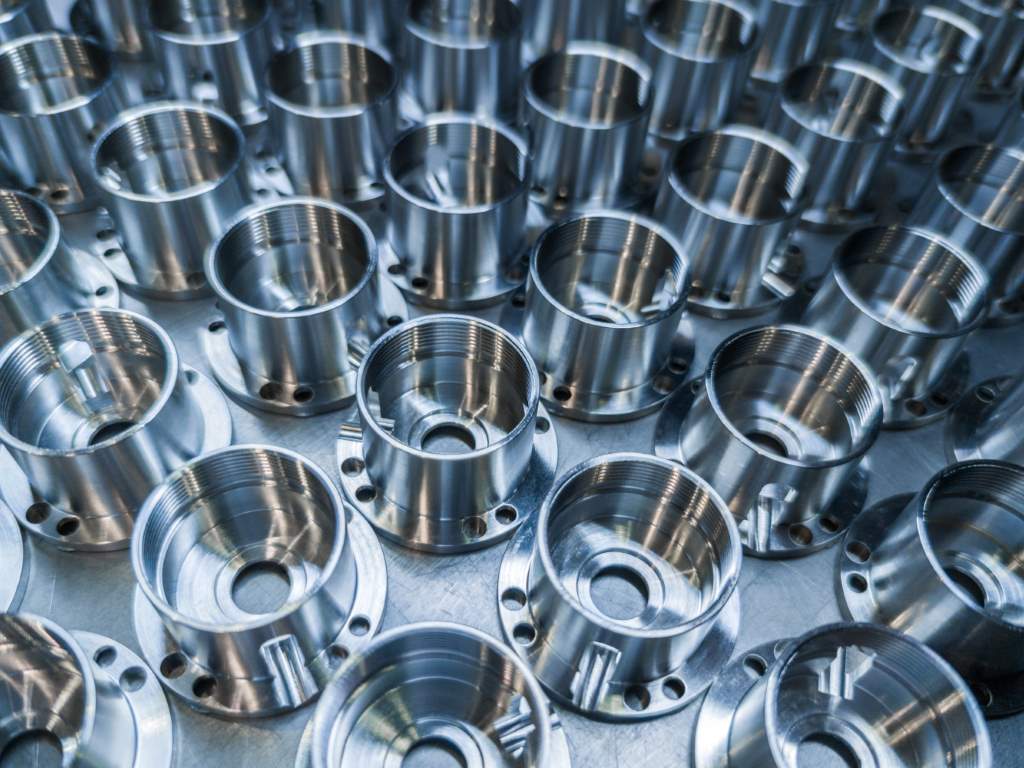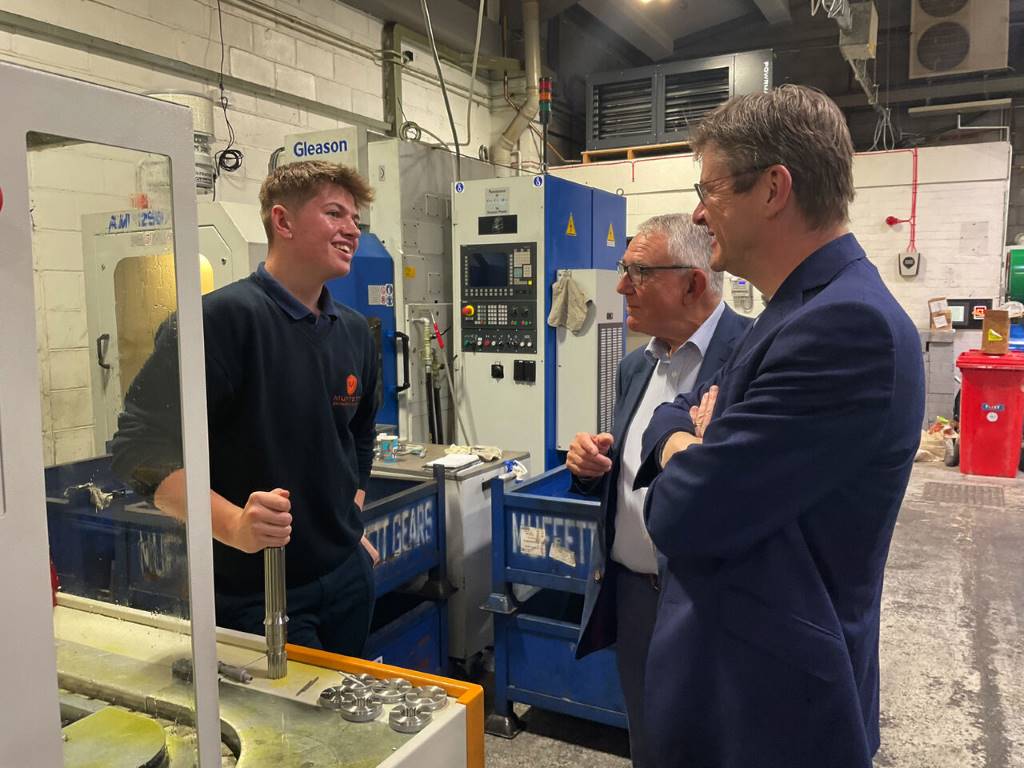Clean bill of health
Midlands-based Syspal, a specialist fabrication company that manufactures handling and other equipment mainly from aluminium and stainless steel
, has installed a flatbed fibre laser cutting machine from Bystronic UK. Solutions discovers how the new machine has improved production of sheet metal for used for medical applications.
Syspal specialises in supplying products and services to the medical, pharmaceutical and food industries as well as other sectors where hygienic, durable materials are essential.
The fibre laser broadens the firm's capabilities to process antimicrobial materials such as copper alloys, which inactivate MRSA and other bacterial infections as well as micro-organisms like moulds, fungi, algae and even viruses. They can therefore reduce the spread of bacteria from touch surfaces, which is especially important for hospitals, cruise ships and even public spaces.
The company's managing director Chris Truman explains: “We have operated a number of CO₂ laser profiling machines for many years and continue to do so but that type of machine is not able to cut copper, as reflections can damage the optics and beam delivery system.
“Fibre laser machines, on the other hand, are able to cut copper and its alloys such as brass up to 8mm thick, which will allow us to produce components and assemblies from the latest antibacterial materials like KME Plus copper sheet.
“Due to its high reflectivity, even aluminium sheet, which is one of our main materials, is problematic to cut with a CO₂ laser, while processing stainless steel tends to be slow.
“We regularly cut both metals up to 10mm thick, which are tackled efficiently by the fibre laser, while up to 15mm can be processed if needed. The CO₂ machine is now mainly used for profiling thicker materials.”
Faster and cheaper
Another advantage of a fibre laser is its speed. When cutting aluminium and stainless steel sheets, Mr Truman says it is generally twice as fast as the CO₂ laser machine, while thin gauges in some other materials can be profiled three to four times faster. He also points out that running costs are lower, as the consumables are less expensive, and a fibre machine draws only about one third of the power that a CO₂ machine needs. Continuing to praise fibre lasers, Mr Truman adds: “With the BySpeed Fiber cutting parameters are more consistent over the different grades of material we process. It leads to more repeatable cut quality, helped by automatic nozzle change and alignment after a predetermined number of piercings.
“The drawbacks of CO₂ are that the focal length of the lens can drift and the mirrors become dirty, which means that while cut quality close to the source may be OK, it deteriorates as the nozzle moves further away, leading to loss of accuracy.”
Syspal, located in Broseley, Shropshire, was an early adopter of CO₂ laser cutting and has long experience of the process, having installed its first machine more than 25 years ago. The fibre laser machine, a Bystronic BySprint 4020 fitted with the latest CNC system containing advanced nesting software, is not only faster but also results in increased utilisation of the 4 x 1.5m sheets, which is the standard size at Syspal.
While so-called common line cutting has theoretically been possible for some years during which a single cut simultaneously produces one side of a component and another side of a second component, creation of suitable programs has hampered its adoption. Using the nesting software in the latest Bystronic control, such manufacturing cycles are now routinely programmed. Overall, between 10 and 20% more product can be cut from any given sheet at Syspal, significantly reducing the area of wasted material remaining in the skeleton.
Added automation
To achieve long periods of minimally manned running and maximise production output, the company has opted to automate the fibre laser machine with a ByTrans 2040 Extended sheet handling system. It receives its instructions from the program running in the machine control, delivering raw material to the shuttle table and unloading processed sheets.
It was the first of this large size of auto load/unload equipment to be installed in the UK, following its launch at the EuroBlech show last October. Nevertheless the footprint is relatively small, as is that of the BySprint Fiber machine.
Compactness, together with robust engineering and simplicity of operation, were the main reasons for Mr Truman and his production team opting for this supplier.
When dealing with larger sheet sizes, which are significantly heavier than the more usual 3 x 1.5m stock, eliminating manual handling avoids the risk of operator injury and also helps to protect material and components from accidental damage.
The automation equipment comprises two cassettes of three tonnes capacity each, one above the other, providing a range of possibilities for materials handling. Each cassette can be loaded by fork lift truck with a different type of palletised sheet material. Pallets are prepared at one of the output stations serving the 100 location Stopa automated sheet metal storage and retrieval system at Broseley.
Alternatively, the second cassette can hold cut parts or protective separators that are interspersed with cut sheets to prevent damage to sensitive material. The space beneath the bottom cassette can be utilised for temporarily holding a processed sheet or placing skeletons ready for recycling.
Subcontract services account for around 10% of Syspal's turnover. Work carried out includes laser cutting on the fibre and CO₂ laser machines as well as on a CNC tube laser cutting centre, a 4m automated press brake and other machine tools on the Broseley site.
Syspal aims to provide customers with an efficient service, whether it be a one-off custom solution or a high quantity of standard repeat products. The company's technical and production team, which has long experience in fabrication, takes full advantage of extensive in-house capabilities, while lean manufacturing raises productivity, consistency and quality and ensures prompt delivery to a widening market, both at home and overseas.
Another part of Syspal's business is the design and manufacture of hydrotherapy equipment, elements of which have been patented. The first version was designed for canines in consultation with vets and was introduced in 2006, followed a year later by a version for humans. More than 500 systems are now in use worldwide. They are fabricated to tight tolerances where the speed, quality and repeatability of the Bystronic system offers significant advantages. Top Pic: Chris Truman (left) with David Larcombe, managing director, Bystronic UK
BYSTRONIC
www.bystronic.com
SYSPAL
www.Syspal.com












